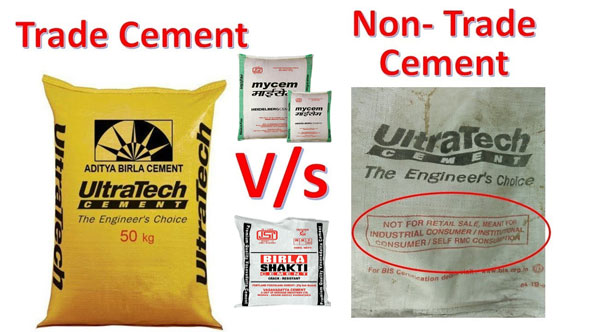Characteristics of Trade and Non trade cement and their differences
- Concrete Cost Estimator
- Concrete Continuous Footing
- Landscape Bidding and Estimating
- Construction Cost Estimating
- Concrete and steel cost estimation
- Construction Cost Estimate Breakdown
- Construction Estimating Worksheet
- Home Construction Cost Estimate
- Estimate Pricing Sheet
- Sheet for General Contractor
- Construction Cost Estimate
- Labor Materials Cost Estimator
- Masonry Estimating Sheet
- Sheet for Building Contractor
- Construction Schedule Bar chart
- General Cost Estimator Sheet
- General Construction Estimate
- Building and Road Estimating Sheet
- Detailed expense estimates
- Door and Window Takeoff Sheet
- General Construction Cost Estimating Sheet

In this construction video tutorial, you will learn the characteristics of Trade and Non Trade cement and differences among them.
Trade Cement: Generally, the manufacturer sells trade cement to the dealers and distributors and they in return sell to the consumers.
Cement dealers purchase this type of cement from cement company and make retail sale from his own shop. The cement dealers get incentive from the company for selling the products.
The trade cement is expensive as compared to non trade cement. All the taxes should be disbursed while giving delivery whereas the taxes for non trade cement is disbursed in any month of financial year.
The profit of dealers and retailers is included in the cost of trade cement. So, the selling prices is raised and it becomes expensive.
Non-trade cement: Non-trade cement is directly sold to direct customer and there is no retailer and distributor. It is not sold to third party.
The manufacturer directly sells the non-trade cement to the consumer (builder, contractor or institution associated with any project and NGO or government). Here, the dealer is ignored.
There are not any heavy overheads and so, the non-trade cement is inexpensive than trade cement. The consumers like realtors, contractors etc. purchase in large quantities from manufacturer.
In non trade cement, the company can directly transmit the materials from its factory to the destination devoid of any doubt of middle man interfering with the product.
To identify the non trade cement, just look at the cement bag and there you will find the note as not for retail sale and designated for industrial consumer.
To get more details, go through the following video tutorial.
Video Source: Tutorials Tips

- Application of concrete calculator
- Roofing Calculator can streamline the roof estimating process
- House construction cost calculator
- Engineering column design excel spreadsheet
- Material Estimating Sheet with Excel
- Materials List and Cost Estimate Worksheet
- Concrete Slab Estimating Calculator Sheet
- Common types of foundations for buildings
- Online calculation of construction materials
- Estimating with Excel for the Small Contractor
- Concrete Beam Design Spreadsheet
- Virtual Construction Management app for construction
- Autodesk’s Project Skyscraper
- Reed Construction’s Reed Insight
- Manage your construction project documentation
- Costimator, the popular cost estimating software
- On Center Software for construction professionals
- Free Construction Estimating Software
- Plumbing Calc Pro
- Cost Estimate Worksheet
- HVAC Piping Quantity Takeoff Worksheet
- Construction Estimating Software Sheet
- Estimate Cost Templates
- Construction Punch List
- Construction cost estimating template consisting estimating basic
- Gantt Chart Template for Excel
- Download Civil Engineering Spreadsheets with Verification
- The Building Advisor Estimating and Budgeting Worksheet
- Spreadsheet for design of concrete bridge
- Construction Estimating Software Free








